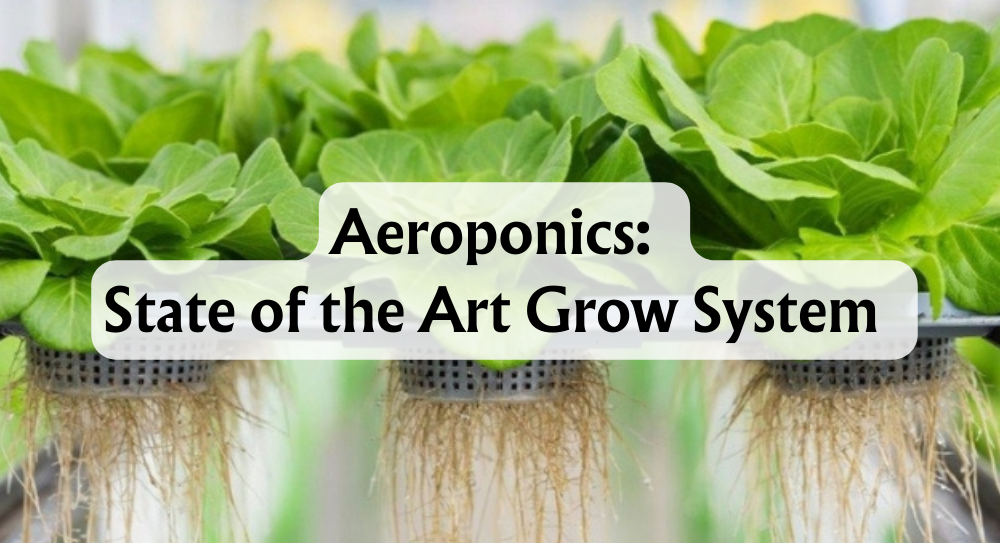Does Hydroponics Save Money?
Hydroponics has become a buzzword in modern gardening, promising to revolutionise the way we grow plants. By bypassing the traditional soil growing medium and using nutrient-rich water, this system offers a sustainable, efficient solution to our gardening needs. But does hydroponics actually save us money? The answer isn't straightforward. There are many factors that contribute to its cost-effectiveness, from initial setup expenses to long-term savings on grocery bills.
If you're tired of the ever-rising costs associated with traditional gardening, hydroponics might just be the answer. The recent boom in eco-conscious practices has gardeners looking for ways to reduce their environmental impact while also keeping costs down. When we use hydroponics, not only do we enjoy potentially higher yields with quick-growing plants, but we also benefit from reduced water and space usage.
To make the most of a hydroponic system, there are key strategies we can employ, like using energy-efficient lighting and choosing the right crops. Leafy greens such as lettuce and spinach often provide the best returns on investment. These simple hacks can lead to substantial savings over time, making hydroponics an enticing prospect for both the environmentally and financially conscious gardener.
Key Takeaways
- Hydroponics can save money depending on setup and crop choices.
- Sustainable practices and efficient resource use are key advantages.
- Leafy greens are typically the most cost-effective crops.
Cost Saving Factors

Investing in hydroponic systems can lead to significant cost savings. This section looks into specific ways hydroponics helps reduce expenses by eliminating soil, lowering fertiliser requirements, and minimising pest problems. Additionally, it covers the benefits of year-round crop production, increased plant growth rates, water conservation through recycling, and reduced labour thanks to automation.
No Soil, No Weeds
Using hydroponic systems means we say goodbye to soil and, consequently, weeds. Not having to buy soil or soil amendments eliminates those costs right away. With no weeds, there's no need for herbicides, reducing both chemical expenses and manual labour. Imagine the savings on potting soil, compost, and weed management over time. It frees up resources to focus on growth and yield.
Lower Fertiliser Costs
Hydroponic systems are efficient in nutrient delivery. The nutrient solution can be precisely controlled, ensuring plants get exactly what they need. This approach allows us to cut back on fertiliser use significantly. In fact, it's been observed that some small-scale growers have reduced their nutrient costs by around 25%, thanks to this precise feeding method. This efficiency isn't just good for our wallets; it's also better for the environment by reducing excess nutrient runoff.
Fewer Pests and Diseases
Without soil, we eliminate a major source of pests and diseases. This not only protects our plants but also cuts our reliance on pesticides and fungicides. Hydroponic lettuce farms, for example, save significantly on pest control measures, enhancing both profit margins and environmental sustainability. It also means we're able to cultivate crops that are healthier and safer for consumption.
Crops All Year Round
Hydroponics means crops can grow continuously, regardless of season. Controlled environments, like greenhouses, maintain optimal conditions for plant growth. This means we can produce staples like tomatoes even in the depths of winter, boosting our profits by eliminating seasonal downtime. The ability to deliver fresh produce year-round keeps our operation dynamic and responsive to demand.
Increased Growth Rate
Plants generally grow faster in hydroponic conditions, owing to optimised nutrient and environmental settings. Studies show plants can grow 20–50% faster in these systems compared to traditional soil. Faster plant growth leads to quicker harvesting cycles and therefore, higher yields in a shorter period. This accelerated growth is particularly beneficial for leafy greens, herbs, strawberries, and more.
Recycle Water and Nutrients
A major advantage of hydroponics is the recycling of water and nutrients. Closed-loop systems significantly reduce water waste, conserving valuable resources. When we compare water use with traditional farming, hydroponics can use as much as ten times less. This translates into a marked reduction in water bills and helps promote sustainability in our agricultural practices.
Automated, Reduced Labour
Modern hydroponic systems often incorporate automation to reduce manual labour needs. With timed nutrient pumps and smart sensors for monitoring pH and EC levels, we can cut down on labour hours considerably. One case study showed a grower reducing labour by 40% with automation. Less manual intervention not only saves money but also ensures consistency and precision in plant care.
Cost-Saving Tips and Tricks for Hydroponic Growers

Start Small and Scale Gradually
Let's begin with a simple setup. We can opt for beginner-friendly systems like Kratky or Deep Water Culture (DWC). These systems are easy to manage and provide us with hands-on experience without the large initial costs. Starting small allows us to learn and make improvements before scaling up.
Invest in Quality Automation
Automating our hydroponic system can save us money in the long run. Tools such as timers, pH sensors, and water pumps can enhance efficiency. Investing in these tools might save time and prevent costly mistakes.
Choose the Right Crops
Selecting crops wisely can maximise our return on investment. Focus on high-demand and profitable crops such as herbs and leafy greens. Basil, lettuce, and spinach are excellent choices as they have higher market value and shorter growth cycles. We should avoid crops that are low in value or labour-intensive.
Regular Maintenance to Prevent Waste
Keeping our equipment in top condition is essential. Regular cleaning prevents issues such as algae buildup and clogs, which can lead to equipment failure. Simple maintenance tasks, like cleaning the reservoir and checking the pumps, can save us money by prolonging the lifespan of our equipment. £50 spent on a preventive maintenance kit today can avoid hundreds in repair costs tomorrow.
Final Thoughts

Hydroponics can indeed save us money while offering various other benefits. With its ability to reduce water use and eliminate soil, it stands out as a resource-efficient option for growing plants. The rapid growth rates and fewer pest problems make it even more appealing.
While there are upfront costs, the long-term savings potential is considerable. We suggest keeping track of spending on produce—and comparing it with hydroponic costs—to see the difference.
For those of us interested in nutritious produce, growing leafy greens like lettuce and spinach indoors consistently provide fresh, healthy options. Regular harvesting keeps our meals varied and healthy.
Experimenting and tailoring systems to our individual needs can maximise these benefits. Preparing our own nutrient solutions and learning from other growers can help us find the perfect setup for our space and preferences.
The profitability of hydroponics is significant, as seen with Nepalese farmers who reported a cost-benefit ratio of 2.32 times. This highlights why investing in a hydroponics system could be financially worthwhile.







 Store Locator
Store Locator














